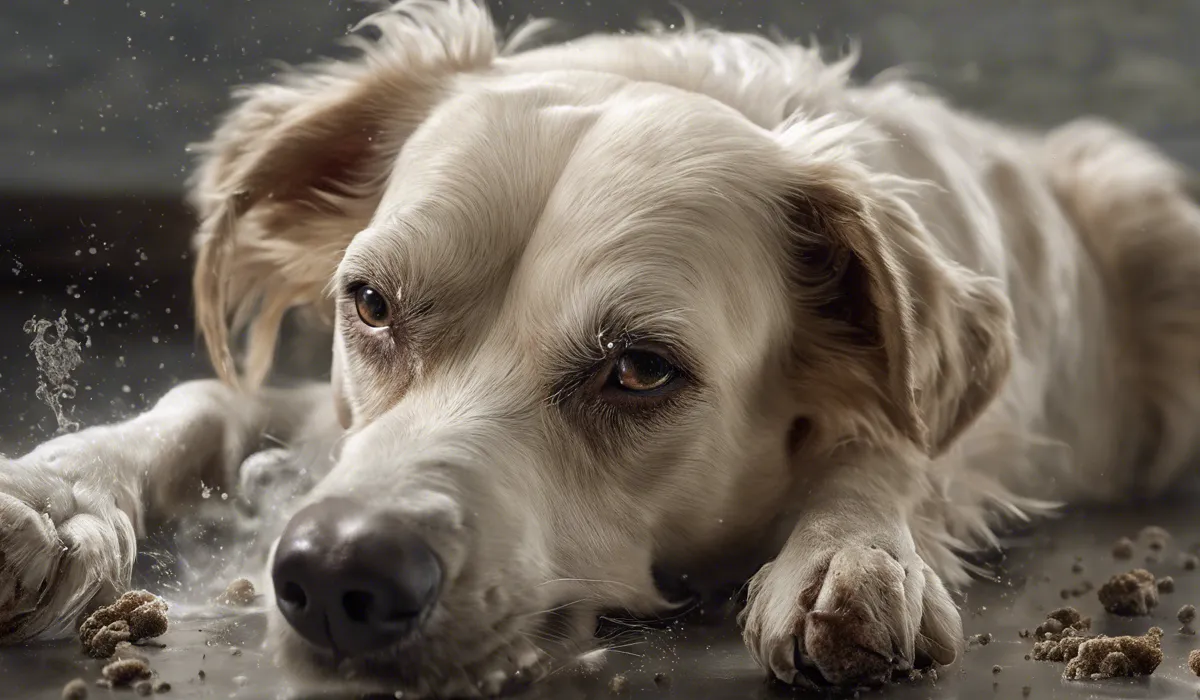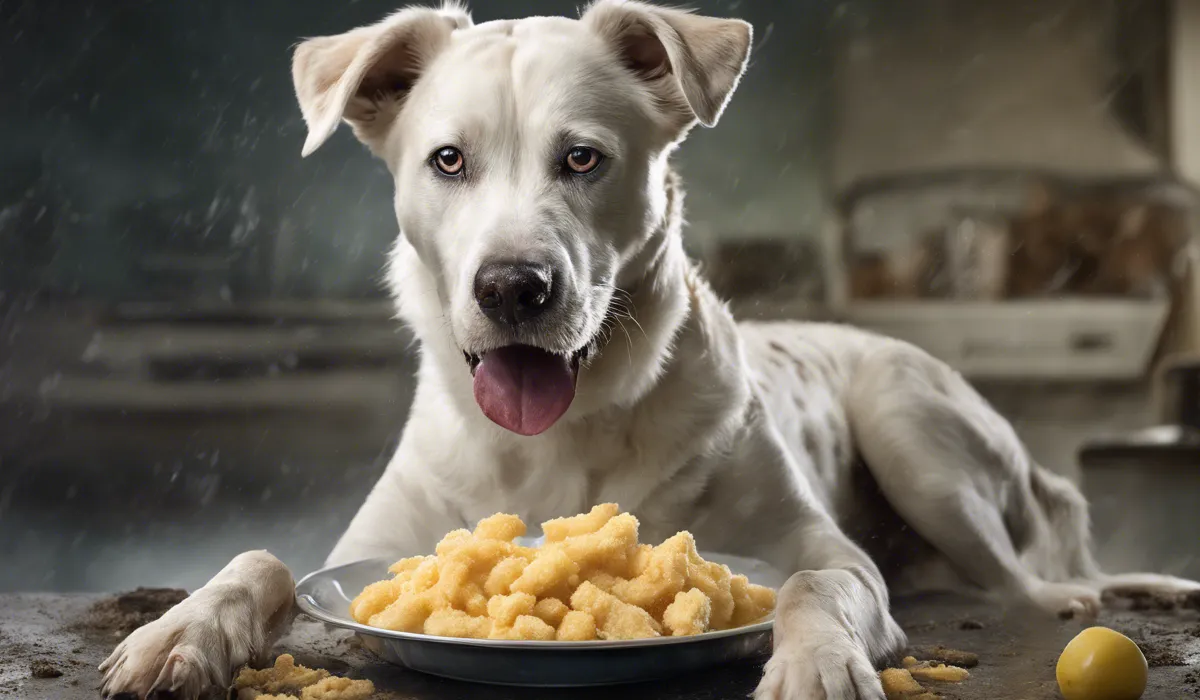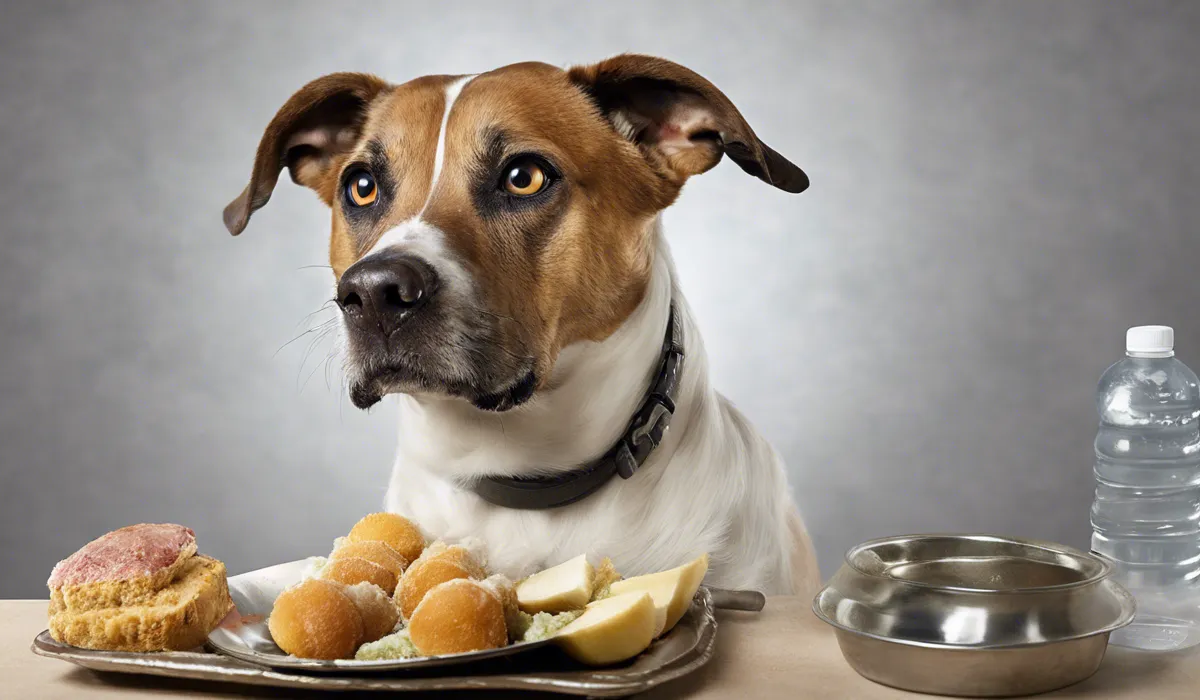Dogs should not eat mold, as it can contain mycotoxins which are harmful to their health. Ingesting moldy food can lead to vomiting, diarrhea, and severe reactions like tremors or seizures. If your dog eats mold, consult a vet immediately.
The Dangers of Mold to Dogs

Understanding Mold and Its Harm
Mold is a type of fungus that grows in damp environments. It can appear on food, walls, and almost anywhere moisture lingers.
For dogs, mold is not just unpleasant to look at, it can be dangerous. Molds produce toxins known as mycotoxins that can cause serious health issues when ingested.
Dogs, curious by nature, may sniff or lick moldy substances, which is risky for their health.
Common Household Molds
There are several types of mold that might grow in homes, including Aspergillus, Penicillium, and Rhizopus.
These molds can be found on stale bread, cheese, nuts, and even pet food that’s been left out too long. Knowing which molds are around can help you protect your dog from exposure.
Immediate Health Risks of Mold Ingestion
If a dog eats mold, they may suffer from gastrointestinal upset. This can include symptoms like vomiting and diarrhea.
Some dogs may also have allergic reactions to mold, which can manifest as skin irritation or respiratory issues. It’s crucial to recognize these symptoms early to prevent further complications.
Long-Term Health Risks and Mycotoxins
Over time, consuming mold can lead to mycotoxin poisoning in dogs. These toxins can damage the liver and kidneys and may even cause cancer.
The effects can be cumulative, building up slowly with repeated exposure to moldy foods or environments.
Aflatoxins and Canine Health
Aflatoxins are a type of mycotoxin commonly found in moldy corn, peanuts, and grain. They can be particularly harmful to dogs, causing severe liver damage.
Symptoms of aflatoxin poisoning can include lethargy, loss of appetite, and yellowing of the eyes or gums, indicating liver problems.
Recognizing Mold Exposure Symptoms
Signs that your dog may have ingested mold include coughing, wheezing, nasal discharge, and in severe cases, tremors or seizures.
If you notice any of these symptoms, especially after your dog has been around possible mold sources, it’s crucial to act fast and seek veterinary care.
Safe Handling of Moldy Foods and Prevention

Preventing Mold in Pet Foods
To prevent mold growth, store dog food and treats in a cool, dry place. Sealable containers are best for keeping dry food fresh and mold-free.
Make sure to check expiration dates and keep an eye out for any signs of spoilage before offering food to your dog.
Proper Food Storage Tips
Dry dog food should be stored in airtight containers, away from humidity. Wet food, once opened, needs to be refrigerated and used within a few days.
Homemade dog treats should be kept in the refrigerator or freezer to extend their shelf life and prevent mold.
What to Do with Moldy Pet Food?
If you find mold on your dog’s food or treats, do not try to remove the moldy parts and feed the rest.
Mold spores can spread beyond visible areas. Dispose of any contaminated food immediately to prevent your dog from eating it.
Inspecting Toys and Beds
Regularly check your dog’s toys and bedding for signs of mold or mildew, especially if they have a habit of taking them outside. Washing toys and bedding routinely can help prevent mold buildup.
Cleaning and Disposal of Moldy Items
When cleaning moldy items, wear gloves and a mask to protect yourself. Use appropriate cleaning solutions and dispose of any materials that cannot be thoroughly cleaned.
Make sure to keep your dog away from the area until it’s completely safe.
What to Do If Your Dog Eats Mold?

Immediate Actions After Ingestion
If you see your dog eat mold, remove them from the source immediately. Check their mouth for any remnants and provide fresh water to help clear their throat.
Deciding to Induce Vomiting
Do not induce vomiting unless instructed by a veterinarian. Doing so can sometimes cause more harm than good, depending on what your dog has ingested.
Use of Activated Charcoal
Activated charcoal may be used as a treatment to bind toxins in the stomach and prevent absorption.
However, it should only be administered under the guidance of a veterinary professional.
Contacting Veterinary Professionals
If you suspect your dog has eaten mold, call your vet or an animal poison control center immediately.
They can provide specific advice based on the type of mold and the amount ingested.
Possible Treatments for Mold Ingestion
Treatment options may include supportive care like IV fluids and medications to control symptoms like vomiting.
Detoxification treatments can help clear the toxins from your dog’s system.
Monitoring and Aftercare
After a mold exposure incident, monitor your dog closely for any lingering or emerging symptoms. Follow-up visits to the vet may be necessary to ensure their full recovery.
FAQs About Can Dogs Eat Mold
Is it safe for dogs to eat moldy food?
No, it is not safe for dogs to eat moldy food because mold can contain harmful mycotoxins.
What should I do if my dog eats mold?
If your dog eats mold, you should consult a vet immediately to get professional advice and treatment.
Can mold cause health issues in dogs?
Yes, ingesting mold can lead to health issues in dogs, including vomiting, diarrhea, and severe reactions like tremors or seizures.
Are some molds more dangerous for dogs than others?
Yes, certain types of mold produce more toxic mycotoxins that can be more harmful to dogs.
How can I prevent my dog from eating mold?
Prevent your dog from eating mold by keeping food sealed and stored properly, disposing of spoiled food promptly, and supervising your dog to ensure they do not scavenge for moldy items.
Final Thoughts
Dogs should never consume mold due to the presence of mycotoxins, which pose serious health risks.
Mold ingestion can result in symptoms ranging from vomiting and diarrhea to severe neurological issues like tremors or seizures. Immediate veterinary consultation is crucial if a dog has eaten moldy food to ensure their safety and health.
